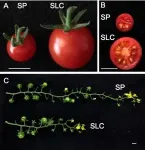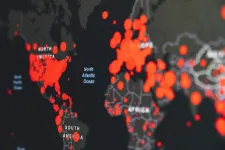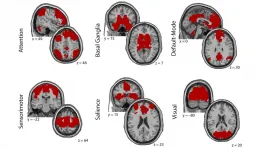'You say tomato, I say genomics': Genome sequences for two wild tomato ancestors
University of Tsukuba research team produces genome sequences for two wild ancestors of tomato, opening the way for using novel genes to breed better tomatoes
2021-01-27
(Press-News.org) Tsukuba, Japan - Tomatoes are one of the most popular types of fresh produce consumed worldwide, as well as being an important ingredient in many manufactured foods.
As with other cultivated crops, some potentially useful genes that were present in its South American ancestors were lost during domestication and breeding of the modern tomato, Solanum lycopersicum var. lycopersicum.
Because of its importance as a crop, the tomato genome sequence was completed and published as long ago as 2012, with later additions and improvements. Now, the team at University of Tsukuba, in collaboration with TOKITA Seed Co. Ltd, have produced high-quality genome sequences of two wild ancestors of tomato from Peru, Solanum pimpinellifolium and Solanum lycopersicum var. cerasiforme. They recently published the work in DNA Research.
The team used modern DNA sequencing technologies, which can read longer sequences than was previously possible, coupled with advanced bioinformatics tools to analyze the hundreds of gigabytes of data generated and to confirm the high quality of the data. They assembled the many sequence fragments, showed where sequences matched the known genes in the 12 chromosomes found in cultivated tomatoes, and also identified thousands of sequences of new genes that are not found in modern types. Many of these novel DNA sequences are present in only one or other of the ancestral species.
The researchers went on to analyze the transcriptome in the two ancestral tomatoes--those genes where the DNA is transcribed into RNA messages, which supply the instructions for the cell to make proteins--examining 17 different parts of the plants to show which genes were active. Together with comparisons with known genes, this information points to possible functions of the novel genes, for example in fruit development, or conferring disease resistance in the leaves, or salt tolerance in the roots.
"The new genome sequences for these ancestral tomatoes will be valuable for studying the evolution of this group of species and how the genetics changed during domestication", says corresponding author Professor Tohru Ariizumi. "In addition, the wild relatives contain thousands of genes not found in modern cultivated tomatoes. With this new information, researchers will be able to locate novel and useful genes that can be bred into tomatoes, and potentially other crops too. This will help plant breeders develop improved future types of tomato with features like better resistance to diseases, increased tolerance for the changing climate, and improved taste and shelf-life."
INFORMATION:
The article, "De novo genome assembly of two tomato ancestors, Solanum pimpinellifolium and S. lycopersicum var. cerasiforme, by long-read sequencing", was published in DNA Research at doi.org/10.1093/dnares/dsaa029
[Attachments] See images for this press release:

ELSE PRESS RELEASES FROM THIS DATE:
2021-01-27
Children of all ages can completely bypass age verification measures to sign-up to the world's most popular social media apps including Snapchat, Instagram, TikTok, Facebook, WhatsApp, Messenger, Skype and Discord by simply lying about their age, researchers at Lero, the Science Foundation Ireland Research Centre for Software have discovered.
And even potential age verification solutions identified by the research team can be easily sidestepped by children, according to the team's most recent study: Digital Age of Consent and Age Verification: Can They Protect Children?
Lead researcher Lero's Dr Liliana Pasquale, assistant professor at University College ...
2021-01-27
Harpy eagles are considered by many to be among the planet's most spectacular birds. They are also among its most elusive, generally avoiding areas disturbed by human activity - therefore already having vanished from portions of its range - and listed by the International Union for the Conservation of Nature (IUCN) as being 'Near-Threatened'.
However, new research led by the University of Plymouth (UK) suggests estimates of the species' current distribution are potentially overestimating range size.
Using a combination of physical sightings and environmental data, they developed a spatial modelling framework which aims to estimate current and past distributions based on the birds' preferred habitat conditions.
The authors then used the model to estimate a ...
2021-01-27
Multi-disciplinary researchers at The University of Manchester have helped develop a powerful physics-based tool to map the pace of language development and human innovation over thousands of years - even stretching into pre-history before records were kept.
Tobias Galla, a professor in theoretical physics, and Dr Ricardo Bermúdez-Otero, a specialist in historical linguistics, from The University of Manchester, have come together as part of an international team to share their diverse expertise to develop the new model, revealed in a paper entitled 'Geospatial distributions reflect temperatures of linguistic feature' authored by Henri Kauhanen, Deepthi Gopal, ...
2021-01-27
(Scottsdale, Ariz. - January 27, 2021) HIRREM (the legacy research technology of Cereset - a Brain State Company) was utilized by the Wake Forest School of Medicine to study symptoms of traumatic stress in military personnel before and after use of Cereset (legacy) intervention.
Whole brain, resting state magnetic resonance imaging (MRI) was done pre- and post- Cereset intervention. Significant effects on brain network connectivity have been previously reported.
For the current study, lateralization of brain connectivity was analyzed. Lateralization here refers to the distribution of brain connections within the right, and left side, or to the opposite side. This is important because common lobes in the ...
2021-01-27
Montreal, January 27, 2021 - Taking cannabidiol, a chemical in the cannabis sativa plant, isn't an effective way to reduce your dependence on cocaine, researchers at the CHUM Research Centre find.
In North America, close to 5.5 million people use cocaine regularly, and nearly one in five becomes addicted, developing cocaine use disorder, for which there is no clinical treatment. One solution has been touted, however: treatment with cannabidiol.
Better known as CBD, it's a chemical in the cannabis sativa plant known for its protective effects on the brain and liver. But there is very little scientific evidence to support its use as a treatment for addiction.
In fact, in a study published ...
2021-01-27
Stopping the spread of COVID-19 is difficult enough. It's even more complicated and confusing when information and resources provided by governments are largely inaccessible to a variety of disabled populations. A newly-published global survey of national health authority websites in nearly 200 countries has directly quantified COVID-19 information accessibility.
The survey, published on January 27, 2021 in the journal Frontiers in Medicine, was conducted by researchers and medical professionals from Bar-Ilan University's Azrieli Faculty of Medicine, the Galilee Medical Center and Tel Aviv ...
2021-01-27
As the climate warms and Arctic sea ice retreats, research vessels and commercial ships are sailing into the Arctic Ocean more and more, but the accuracy and sensitivity of regional weather and marine forecasts for these hazardous waters still lag well behind those of their lower-latitude counterparts, with significant differences between regional models. Direct measurements of atmospheric conditions, such as cloud cover and solar radiation, can help to evaluate and improve these models.
In a new study published in the Journal of Geophysical Research: Atmospheres, a research team led by the National Institute of Polar Research in Tachikawa, ...
2021-01-27
Sophia Antipolis, 27 January 2021: Pregnancy complications and early menopause increase women's future risk of heart disease. Cardiologists, gynaecologists and endocrinologists recommend how to help middle-aged women prevent later heart problems in a European Society of Cardiology (ESC) consensus document published today in European Heart Journal, a journal of the ESC.1
"Physicians should intensify the detection of hypertension in middle-aged women," states the document. Up to 50% of women develop high blood pressure before the age of 60 but the symptoms - for example hot flushes and palpitations - are often attributed ...
2021-01-27
Researchers from Queen Mary University of London and Zhengzhou University have developed a powerful therapeutic platform that uses a modified virus for the treatment of pancreatic cancer. By using the virus in combination with other drugs, the treatment significantly extended survival in preclinical models of pancreatic cancer.
Viruses that can selectively infect and destroy cancer cells, known as oncolytic viruses, are a promising new class of therapeutics for cancer. Through various mechanisms, oncolytic viruses kill cancer cells and elicit strong anti-tumour immune responses. However, current oncolytic virotherapy is unable to produce a long-term cure in patients, and the treatment has to be delivered directly into the tumour - a route that is not feasible for deeply embedded ...
2021-01-27
A material that can be used in technologies such as solar power has been found to self-heal, a new study shows.
The findings - from the University of York - raise the prospect that it may be possible to engineer high-performance self-healing materials which could reduce costs and improve scalability, researchers say.
The substance, called antimony selenide (Sb2Se3), is a solar absorber material that can be used for turning light energy into electricity.
Professor Keith McKenna from the Department of Physics said: "The process by which this semi-conducting material self-heals is rather like how a salamander is able to re-grow limbs when one is severed. Antimony selenide repairs broken bonds created when it is cleaved by ...
LAST 30 PRESS RELEASES:
[Press-News.org] 'You say tomato, I say genomics': Genome sequences for two wild tomato ancestors
University of Tsukuba research team produces genome sequences for two wild ancestors of tomato, opening the way for using novel genes to breed better tomatoes





